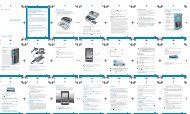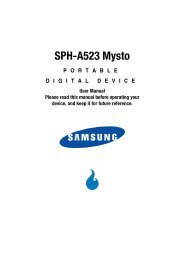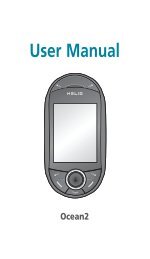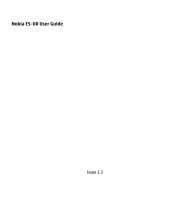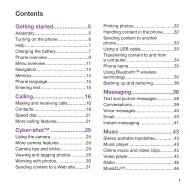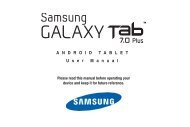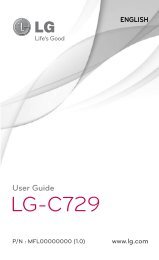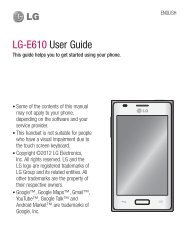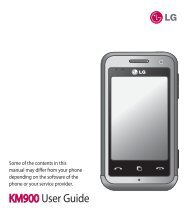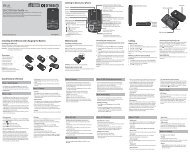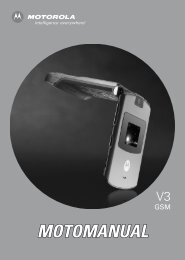LG Rumor 2 Manual - Cell Phones Etc.
LG Rumor 2 Manual - Cell Phones Etc.
LG Rumor 2 Manual - Cell Phones Etc.
Create successful ePaper yourself
Turn your PDF publications into a flip-book with our unique Google optimized e-Paper software.
Turning Off Your Phone in Dangerous Areas<br />
To avoid interfering with blasting operations, turn your phone off<br />
when in a blasting area or in other areas with signs indicating<br />
two-way radios should be turned off. Construction crews often<br />
use remote-control RF devices to set off explosives.<br />
Turn your phone off when you’re in any area that has a<br />
potentially explosive atmosphere. Although it’s rare, your phone<br />
and accessories could generate sparks. Sparks can cause an<br />
explosion or fire, resulting in bodily injury or even death. These<br />
areas are often, but not always, clearly marked. They include:<br />
� Fueling areas such as gas stations.<br />
� Below deck on boats.<br />
� Fuel or chemical transfer or storage facilities.<br />
� Areas where the air contains chemicals or particles such<br />
as grain, dust, or metal powders.<br />
� Any other area where you would normally be advised to<br />
turn off your vehicle’s engine.<br />
Note Never transport or store flammable gas, flammable<br />
liquids, or explosives in the compartment of your<br />
vehicle that contains your phone or accessories.<br />
Restricting Children’s Access to Your Phone<br />
Your phone is not a toy. Do not allow children to play with it as<br />
they could hurt themselves and others, damage the phone or<br />
make calls that increase your Sprint invoice.<br />
132 4A: Important Safety Information<br />
Using Your Phone With a Hearing<br />
Aid Device<br />
A number of Sprint phones have been tested for hearing aid<br />
device compatibility. When some wireless phones are used with<br />
certain hearing devices (including hearing aids and cochlear<br />
implants), users may detect a noise which can interfere with the<br />
effectiveness of the hearing device.<br />
Some hearing devices are more immune than others to this<br />
interference noise, and phones also vary in the amount of<br />
interference noise they may generate. ANSI standard C63.19<br />
was developed to provide a standardized means of measuring<br />
both wireless phone and hearing devices to determine usability<br />
rating categories for both.<br />
Ratings have been developed for mobile phones to assist<br />
hearing device users find phones that may be compatible with<br />
their hearing device. Not all phones have been rated for<br />
compatibility with hearing devices. <strong>Phones</strong> that have been rated<br />
have a label located on the box. Your RUMOR2TM has an M3 and a<br />
T4 rating.<br />
These ratings are not guarantees. Results will vary depending<br />
on the user’s hearing device and individual type and degree of<br />
hearing loss. If a hearing device is particularly vulnerable to<br />
interference noise; even a phone with a higher rating may still<br />
cause unacceptable noise levels in the hearing device. Trying



